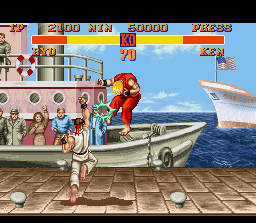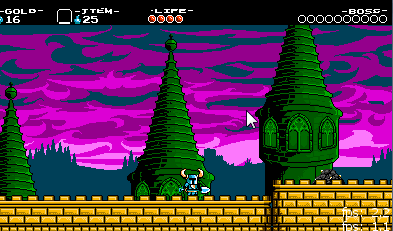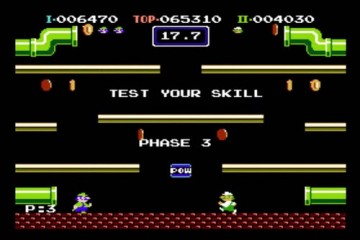Yesterday, we dove into how StreetPass works in Shovel Knight, so if you missed that, be sure to give it a look. Today, we’re going to talk a little about how the idea developed; you might not believe where its origins lie!
Early Ideas
Ever since we decided to support the 3DS’s unique StreetPass feature, we brainstormed a ton of gameplay concepts. However, most required too much explanation, too much unique content to implement, or didn’t fit into Shovel Knight’s world or gameplay structures.
For example, we thought it’d be really cool to let the player hide money or items in any room in a stage, and then when StreetPassing, it would appear in that location for another player. It felt like a fun idea to try to trick players and hide treasure in difficult unexpected locations, and it matched our gameplay to be seeking hidden StreetPass treasure. On the other hand, we didn’t want to encourage people replaying single levels over and over (we would rather they play the entire game over and over with New Game+), and we guessed that most players might be hiding treasure in levels that the player had already visited. Finally, if you beat the game, the feature probably wouldn’t be as much fun. This and many other ideas were abandoned or shelved for another day.
The final idea was based on a small piece of already-existing tech we were hoping to find a use for. In addition, this new idea encouraged the player to keep delving into the game even after it was completed. Believe it or not, the basis for the final idea can be found in none other than a Facebook version of a famous board game: Scrabble.
Taking Turns

Asynchronous Multiplayer was the key!
When Facebook games were just starting to pop up, none of them seemed very interesting, but one that caught our eye was Scrabble. It had an interesting gameplay idea that matched Facebook’s platform really well – you weren’t required to play the game in real time! Of course, turned based video games had been around a while, but there hadn’t been many games where you could take days to complete the next turn with an opponent across the world. That implementation meant you could be playing multiple games at one time at your own pace. It was an exciting idea, one that made you feel like a chess master in a New York City park, taking on 20 opponents at once.
In the way that many creative processes are born, we shelved this concept for the future. Often, new ideas come from combining multiple older ideas in a creative way. In this case, we were wondering how we could fuse the Scrabble idea with something more action based. What if the interaction could be more live, more playful?
Street Passer II

We had been thinking maybe it’d be cool one day to make a game where 2 combatants recorded their fight in small sequences.The recordings would be played back in small sequences and this would all occur very rapidly. The player records a few seconds of their next fighting actions simultaneously or separately depending on the scenario, and then when both players are done, it plays them back and you watch the action. It would be pseudo real time.
This could be a Wii U idea where you’re deciding for your character very rapidly (pause, record a few seconds, then playback the few seconds and each person is watching their character on their own screen). It could also be played online… or even slowly, similar to the Scrabble scenario.
It sounded like a silly way to play one of those games; you don’t know exactly what your opponent will do, so play would be chaotic and everyone could have a laugh. It also sounded appealing because you could spend more time planning your actions in advance, and the gameplay would feel less twitchy. You could be playing 50 matches at once in an online scenario!
We really liked this idea, but thought it would be a hard idea to get people to appreciate. It seemed like it would only work for a spin off of a series that people already understood. Learning the characters in a fighter is tremendously complex and adding another layer of complexity to that seemed like too much. But if we could add it to an existing property where players understood the base mechanics, it wouldn’t be a large step to process the turn based aspects of the design.
You might be seeing how StreetPass was born out of this idea. As previously mentioned, we had already written tech to make the process of a recorded battle possible – for debugging and gameplay purposes, we created an input recorder, so we could play back user input for things like an attract mode or to find bugs when testing.

Example of recorded input played back at 10x the speed!
Solidifying the Design
The 2D fighter idea now seemed perfect for StreetPass, since it’s turn-based by nature. Using Shovel Knight as a base, we wouldn’t run into the complications of a 2D fighter, as Shovel Knight’s basic controls were simple. We could also introduce the arena after the player was familiar with how to play the game. And the idea of a battle arena in Shovel Knight encouraged replayability in a way that positively reflected our design intentions; it encouraged players to try out new techniques and learn from each other, which then could be taken back into the single player campaign.

Mario Bros' symmetrical playfield setup and coins
Ideas are easy to generate, but the details are often where it all breaks down. We went to work trying to make the experience fun. We started with a base of three, short, 5 second rounds as we knew recording the data would feel boring if it took too long (and with StreetPass the only option was recording the entire match at once). With this in mind, we felt like fighting wasn’t enough of an incentive for the player and fighting alone would cause the match to be too much blind foolery.
This is where the introduction of collectible Mario Bros-style gems came into play. You could collect the gems to win in a different way! Without gems, we were afraid players would just go straight for each other every match. Short matches would be predictable and boring. Adding gems to collect not only gave a separate goal for those too confused about attacking a non-existent enemy, but gems provided a clear direction for the player to move and a clear direction for where the opponent might be. This insured the player knew the opponent might be in certain spots of the arena at certain times, making attack situations more obvious, therefore providing more scenarios for strategies to develop.
After gems were created as a way to encourage many strategies, we had to figure out how to place them and give a coherent level design to the battle. With that, came the question of how do we present the level so two people can StreetPass and be on either the left or right side and always have the same result. One option could be that it could decide you are either a left or right side fighter, but that limited our options, so we decided to simply make the levels symmetrical. This meant you could always start on the left side, and your opponent could always start on the right side. Then when we sent your data elsewhere, your character would appear as the opponent on the right side, and your inputs would be reversed!
Pictured above was the next step, making sure the level design brought out the best in the gameplay. On the left is the first design we had for the stage and on the right is the final design. The first arena was created to encourage a battle in the center of the screen, but it almost did too good a job of that. There were really no other options. So the players were almost always led on the same path, which led to less interesting battles, and no creative ways to use the subweapons. The distance between the players also caused trouble as most of the clock was spent just trying to meet in the middle!
So on the right you can see a bunch of small changes we made. A lot more paths were created: you could meet in the center like before (but now low, middle, or high) or you could choose to run backwards for a gem. A lot more verticality was added which made subweapons useful and the players started much closer together, so the action could take place immediately. The right and left platforms were brought down so jumping to them wasn’t such a challenge. And finally, we added more than 5 gems so they were easier to pick up making gems a more viable strategy.
The Final Result!
It might be fun to do the piecemeal 2D fighter version one day, push our StreetPass idea even further (wouldn’t it be crazy to submit one recording to a 64 player or larger tournament and all you did was watch the results?!) or even something radically different with this crazy action/turn based gameplay, but for now, we’ll see how everyone likes the current StreetPass. We’ve been having a lot of fun with it, and we hope you all do too!
We hope our little feature inspires other developers to try new things with StreetPass and take advantage of small pieces of tech like input recording, trying to push them into new areas! Of course, we’re leaving a lot out, but this entry has already gotten a bit out of hand! Let us know what you think or what kind of things you’d like to hear more about in the future.

Nothing like watching Shovel Knight whiffing, swinging at air over and over. For Shovelry!


